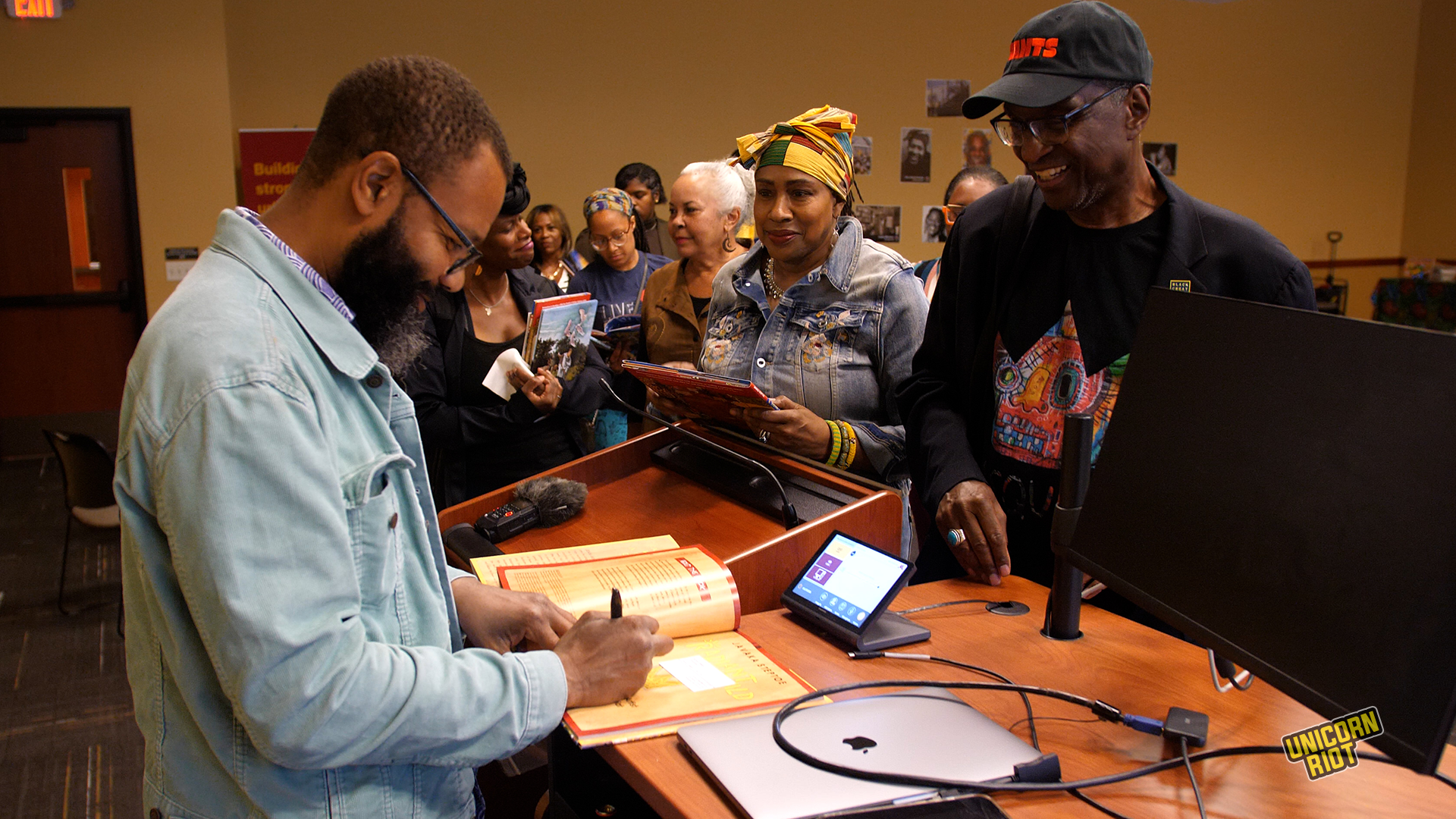Award-Winning Artist Javaka Steptoe Centers Community on Visit to Minneapolis
Minneapolis, MN — Centering Black youth and community, award-winning author and illustrator Javaka Steptoe recently visited Minneapolis to share his joy in art and children’s literature. Recruited by educator Titilayo Bediako, the founder of youth-serving non-profit WE WIN Institute, Steptoe presented at a community event that was held at the University of Minnesota Urban Research and Outreach-Engagement Center (UROC) in North Minneapolis on June 25, 2025.
Steptoe’s few days in the city were filled with events. After getting off the plane he was immediately whisked to a community dinner at Pimento Kitchen’s new lakeside location at Mde Maka Ska, formerly Lake Calhoun. The next morning Steptoe read his books to children at La Crèche Early Childhood Center on the northside of Minneapolis.
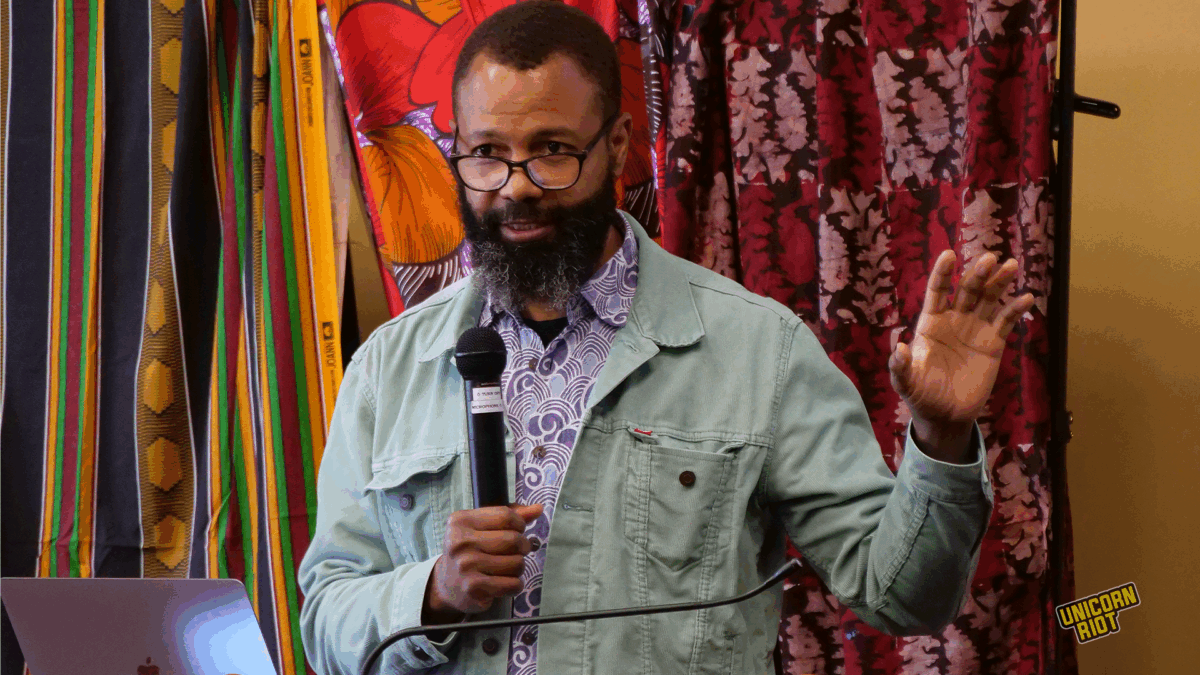
Along with community conversations, readings and presentations, his itinerary included meeting with famed elder Mahmoud El-Kati and getting a massage from veteran healer Kinshasha Kambui at Wellness Paradigm.
A cornerstone of his visit was spending the day making art collages with 60 students at WE WIN Institute’s summer school program. Steptoe worked with students from kindergarten to eighth grade who had familiarized themselves with Steptoe’s work in preparation of his visit.
Javaka’s late father John Steptoe was also an award-winning author and illustrator, known for the creating Mufaro’s Beautiful Daughters, a 1988 Caldecott Honors winner. The elder Steptoe passed from an illness a year after receiving the honor at the young age of 38.
In honor of John Steptoe’s legacy, a part of Monroe Street in Brooklyn was co-named John Lewis Steptoe Place in 2016.
A year after the street naming, a full circle moment occurred when John’s son, Javaka Steptoe, won the Caldecott Medal for his picture book Radiant Child: The Story of Young Artist Jean-Michel Basquiat.
During his presentation in Minneapolis, Steptoe said that creating stories has always been a part of his life and he’s always been interested in art.
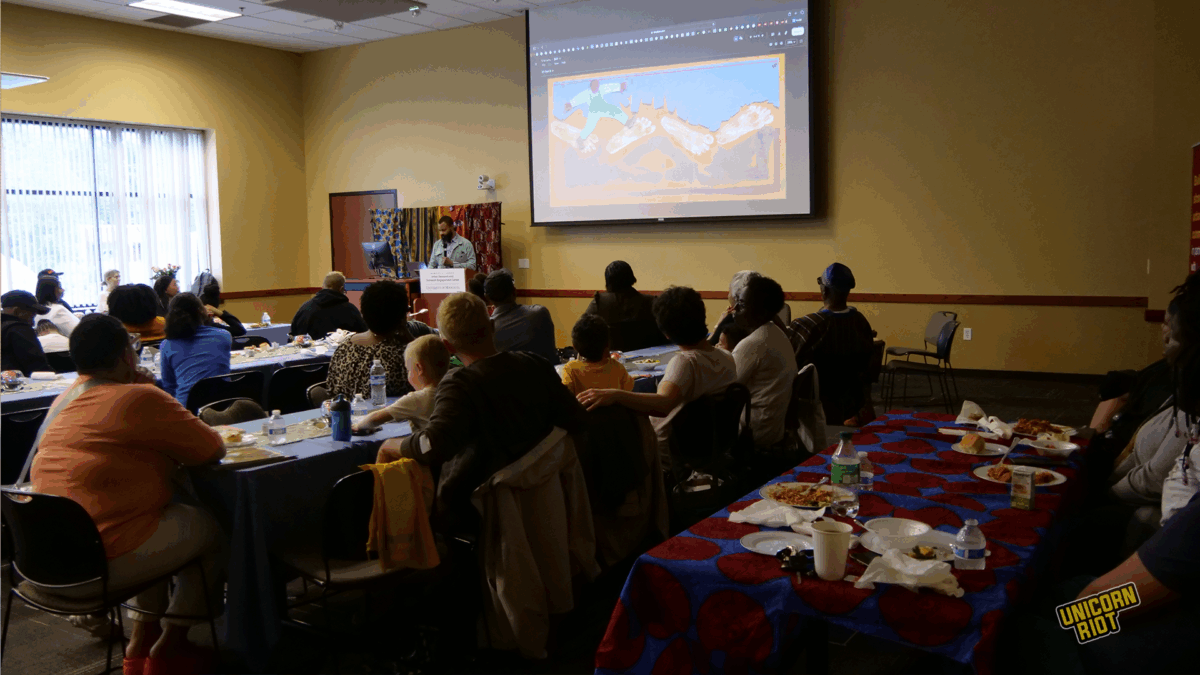
From the moment Javaka stepped into the ring of children’s literature, he was highly recognized. His debut illustration in 1997, In Daddy’s Arms I Am Tall: African Americans Celebrating Fathers, earned him a Coretta Scott King Award for Illustrators and further nominations and honors.
His work has been consistent, reflective, and grounded, earning him numerous awards, honors, accolades, features, and art exhibitions across the country.
“The great thing about being an artist is, I have a voice … It’s important to know history, it’s important to share history because you help people understand how things have changed and how things stay the same.”
Javaka Steptoe, award-winning author and illustrator
Along with winning the Caldecott Medal for Radiant Child in 2017, he also won the Coretta Scott King Award and was nominated for an NAACP Image Award for Outstanding Literary Work.
Dozens of copies of Radiant Child were given away by WE WIN during the June event. Many of these were signed by Steptoe after he presented to the community about how the book was created.
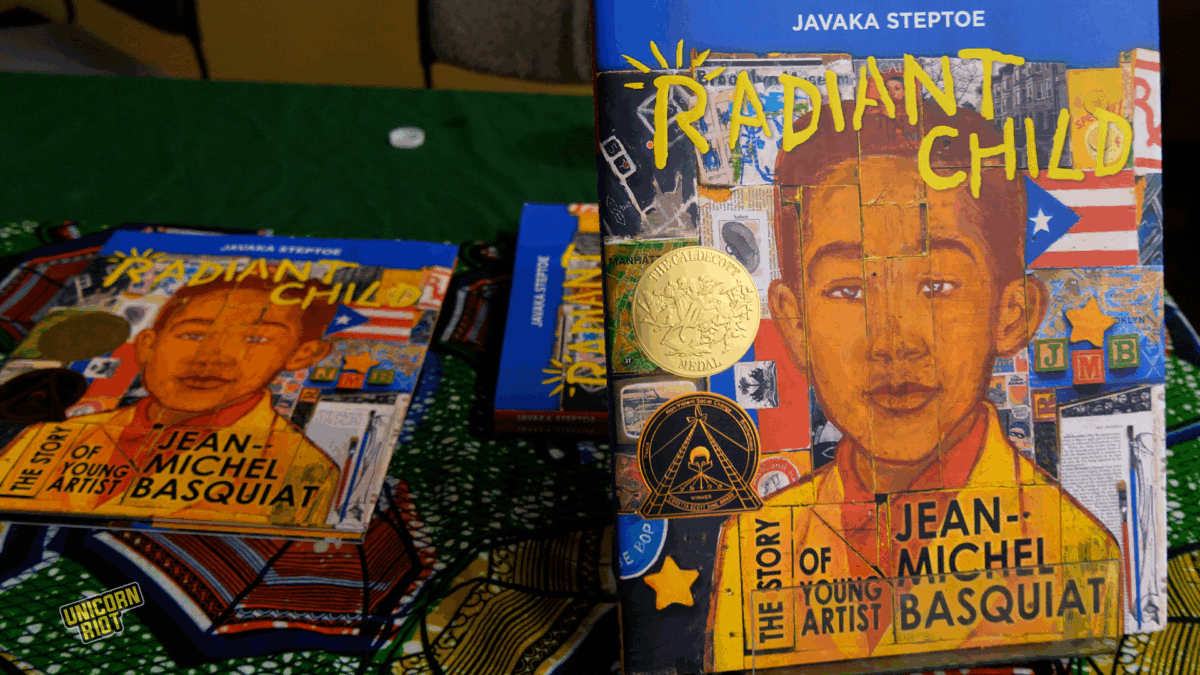
Steptoe creates textured, colorful artistry using multiple-medium collages, paints and everyday objects like pocket lint, ropes, burlaps or hair barrettes.
“The most powerful thing that you have is your mind and your creativity,” said Steptoe, and curiosity is “where everything comes from, that’s the thing that makes you strive to do things.”
Steptoe talked about the importance of having empathy as an artist, and “putting yourself in someone’s situation.” He spoke of his multi-pronged approach to creating illustrations, including research, using the five senses and immersing oneself in the topic.
For Radiant Child, he said he spent two to three years researching Basquiat, whom he felt he could understand as an artist. Steptoe grew up in Brooklyn, New York City just 10 years after Basquiat and followed his work as a teen.
He mentioned some of their similarities to the crowd but didn’t name one of his deepest connections — that of their mothers. Basquiat’s mother had severe depression and was hospitalized when Jean-Michel was 10 while mental illness took Steptoe’s mother from him when he was just 20.
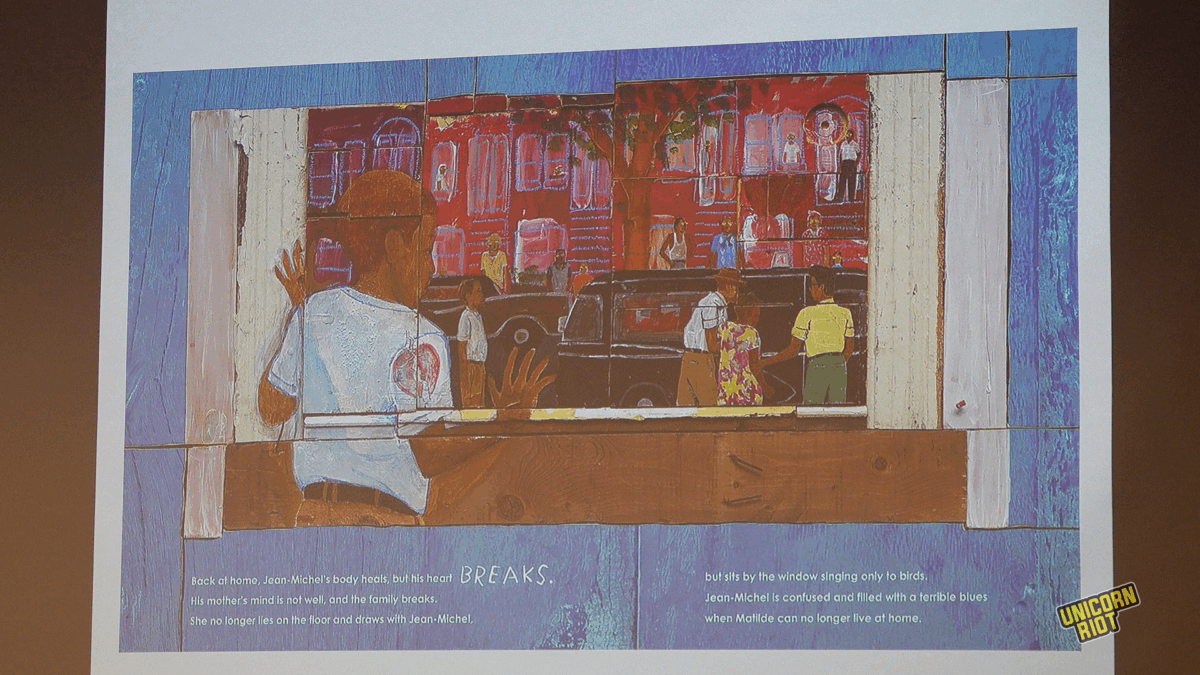
Pushing the importance of literacy, culture and community, Bediako and WE WIN have hosted numerous nationally-known Black artists for community events in Minneapolis, including E.B. Lewis, Leah Henderson, R. Gregory Christie, and Minneapolis Poet Laureate Junauda Petrus.
WE WIN’s program called We Win When We Read, in partnership with Racial Justice Network, has organizations passing out books by Black authors and illustrators to youth for free.
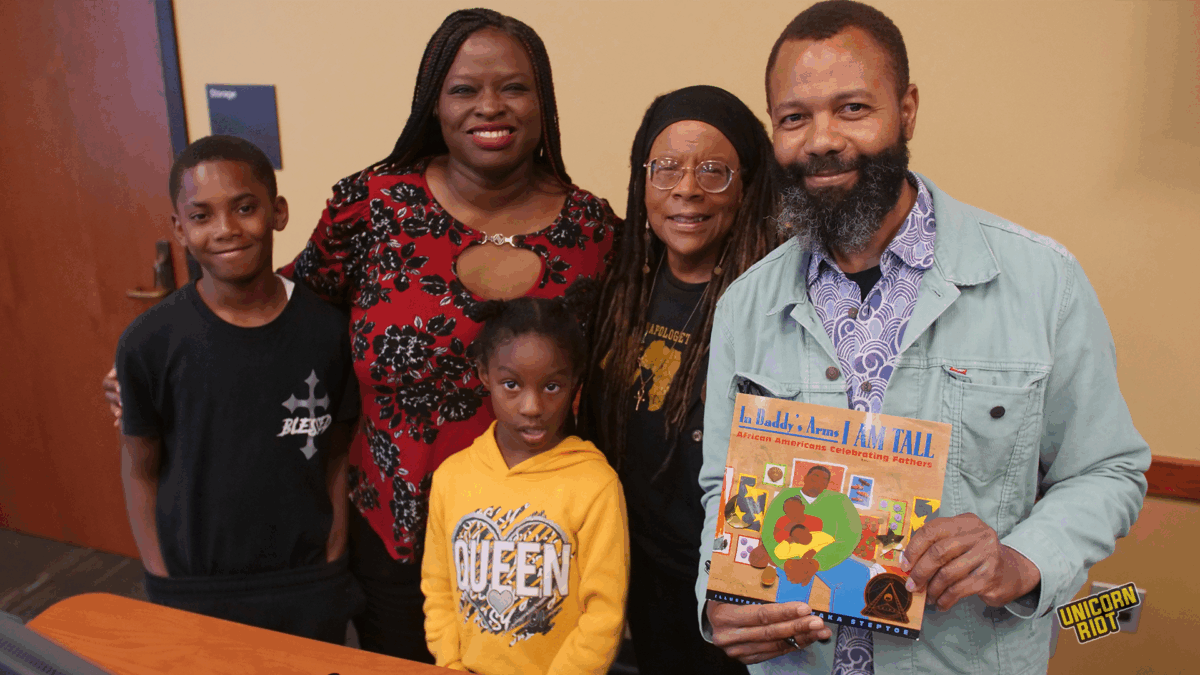
“We have to change the narrative in terms of what we are and we need to begin by having love for ourselves,” said Bediako, and seeing illustrations by Black artists and reading books by Black authors helps youth see “how wonderful they are, how magnificent their culture is and how great they are.”
Bediako had met and invited Steptoe to visit Minnesota while she was at a Black book fair in Philadelphia earlier this year gathering more books by Black authors and illustrators to give to the community.
“I believe in inter-generational learning,” said Steptoe, “you can just buy a book for a kid and they go read it, or you can read it with your kids and you could explain stuff. You can impart the information and the experiences that you’ve had and you can have conversations with your kid about these different things.”
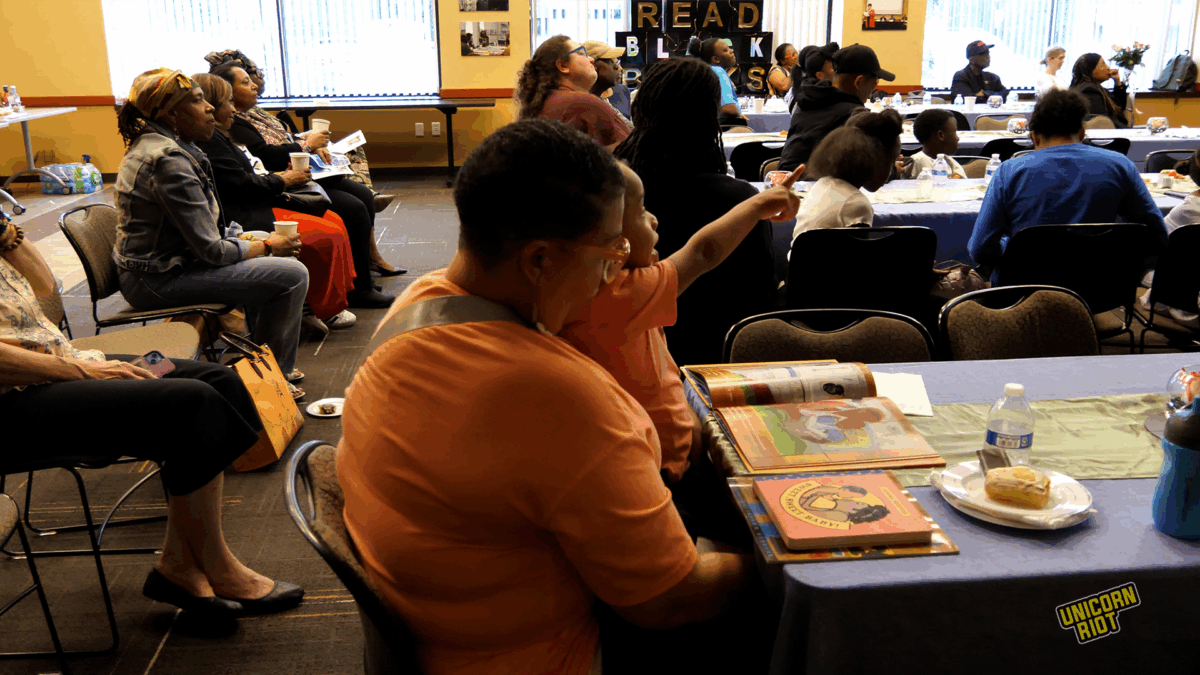
See our special on EB Lewis: Artist EB Lewis Illustrates Social Injustice and Children’s Books
Editor’s note: The author of this article is a former employee of WE WIN Institute.
Follow us on X (aka Twitter), Facebook, YouTube, Vimeo, Instagram, Mastodon, Threads, BlueSky and Patreon.

